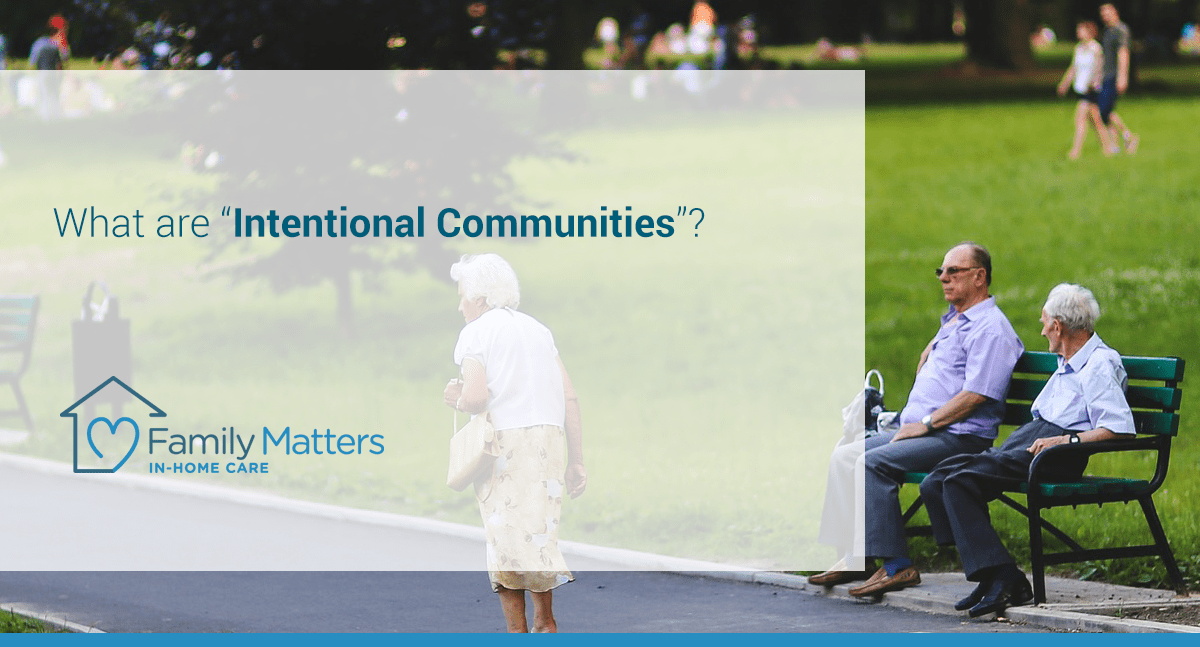
What are “Intentional Communities”?
A growing trend among seniors in their sixties and seventies is the concept of communal living. These baby boomers are now empty nesters, and as they begin thinking about retirement, they are now also reconsidering their living arrangements. Now that the kids are out of the house, there isn’t the need to continue staying in that four bedroom, three bath home. You may be thinking that a retirement community is the answer. While it may be for some, intentional communities are becoming an extremely popular option for many individuals.
The original idea behind these communities first formed in the mid-sixties, is to create a space for people who share similar beliefs. They are another form of independent living for aging adults.
Why are intentional communities increasing in popularity?
One reason that intentional communities have become so popular is that these communities are an affordable living option. Intentional communities are often much less expensive than the costs associated with maintaining a single family home. For retired seniors on a fixed income, communal living is an ideal choice.
Another benefit is that these communities allow seniors to maintain their social life. They will have a built-in community of their peers, which helps them stay happy and active. In keeping with the theme of community, some intentional communities give residents the opportunity to pool their resources. Seniors can combine their money, skills, and talents to help create a better community for the entire group.
Probably the best part of intentional communities is that they have all the comforts of home. The difference is that they have the added benefit of providing seniors with the services they need. These communities also offer enrichment activities to keep residents engaged.
How do intentional communities work?
Instead of moving into an assisted living facility, intentional communities allow seniors to receive supportive services while remaining in their own homes. Residents pay a membership fee, and the services provided by the community are typically free or discounted. Services could include nursing care, companionship, and personal assistance with cleaning, meal prep, and other errands.
Another unique aspect of these communities is that they operate as nonprofit organizations that are run by member residents. Every person living in the community gets a say regarding how the village should operate.
The most important part of the support services that are provided to seniors in intentional communities are the social aspects. This helps safeguard aging adults against social isolation, which is a common occurrence with senior citizens. Many activities are made available for residents including movie nights, trips, church service, and other social events.
How much do intentional communities cost?
Typically, intentional communities cost significantly less than senior living facilities. However, costs will vary based on the amount of care an individual needs. For instance, a person who requires 24-hour care from a nurse may need to pay costs similar to what one would see at a standard nursing home.
It’s important to consider your specific needs when deciding which living options are best for you at this stage of your life. Regardless of what you choose, you deserve to receive professional, friendly care when you need it.
If you or your family member is considering in-home care as part of a plan to age in place, contact Family Matters In-Home Care today for a free consultation. Our team is dedicated to supporting your family and helping older adults enjoy life in the comfort of their own home for as long as possible.
Some of the services offered by Family Matter In-Home Care include: Alzheimer’s & Dementia Care, Bed & Wheelchair Transfer Assistance, Companionship, Housekeeping & Meal Preparation, Personal Care, Recovery Care, and Transportation.
Serving the San Francisco Bay Area and Greater San Diego, Family Matter In-Home Care has offices throughout California including: Campbell, CA, Roseville, CA, San Marcos, CA, and San Mateo, CA.
